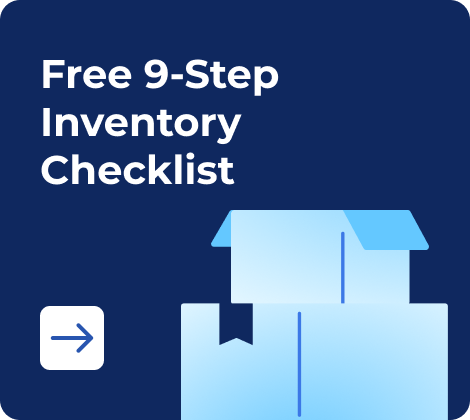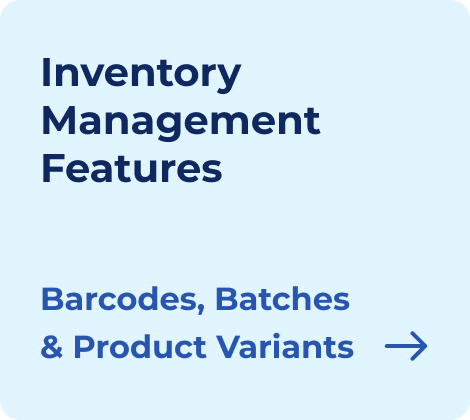Managing orders manually is becoming less viable for small and medium-sized businesses (SMBs). As operations expand and sales channels grow, errors and delays often increase. Implementing an ERP order management system helps businesses overcome these challenges. It streamlines order creation, tracks progress in real time, and centralizes processes.
By automating order management, SMBs can minimize manual errors and speed up fulfillment. The result is an efficient operation that meets customer expectations for accuracy and timely delivery. An ERP system not only improves internal processes but also boosts overall customer satisfaction.
The Role of ERP in Modern Order Management
Order management is a critical component of business operations, particularly for small and medium-sized businesses (SMBs) that strive to balance growth with efficiency. Traditional methods often struggle to keep pace with the demands of modern commerce, leading to a range of operational challenges. ERP systems, however, offer a comprehensive solution by automating and centralizing order processes, transforming how businesses manage their order lifecycles.
Why Traditional Order Management Falls Short for SMBs
Traditional order management methods often involve manual processes, which can be inefficient and error-prone. Small and medium-sized businesses (SMBs) frequently face challenges such as:
- Human Errors: Manual data entry and handling increase the risk of mistakes, leading to incorrect orders, stock discrepancies, and customer dissatisfaction.
- Inefficiencies: Managing orders through separate systems or spreadsheets requires substantial time and effort, often resulting in slower processing times and delayed fulfillment.
- Lack of Real-Time Visibility: Without a centralized system, tracking order status and inventory levels in real time becomes difficult, making it harder to respond promptly to customer needs or inventory issues.
These issues can lead to missed opportunities, operational delays, and a decrease in overall customer satisfaction. As businesses grow, the complexity of managing orders manually becomes unsustainable, necessitating a more robust solution.
How ERP Bridges the Gap Between Complexity and Efficiency
ERP systems offer a transformative solution for the challenges faced with traditional order management. By automating and centralizing order processes, ERP systems streamline the entire order lifecycle, from creation to fulfillment.
- Automation: ERP systems automate repetitive tasks such as order entry, inventory checks, and updates. This reduces manual errors and accelerates processing times.
- Centralization: With an ERP system, all order-related information is consolidated into a single platform. This provides real-time visibility into stock levels, order statuses, and customer data, enabling more informed decision-making.
- Improved Accuracy: Automated workflows ensure that orders are processed accurately and efficiently, minimizing discrepancies and enhancing overall operational efficiency.
According to Statista, businesses using ERP systems see a 30% improvement in order processing efficiency, reflecting the significant impact of automation on reducing errors and speeding up fulfillment. By bridging the gap between complexity and efficiency, ERP systems empower SMBs to handle growing order volumes effectively while maintaining high levels of customer satisfaction.

Key Features of an ERP Order Management System
An effective ERP order management system is characterized by several key features that optimize various aspects of order processing. These features not only streamline operations but also enhance overall business efficiency.
Real-Time Order Tracking and Monitoring
One of the standout benefits of an ERP system is its capability for real-time order tracking and monitoring. This feature provides businesses with instantaneous updates on order status, allowing for:
- Improved Fulfillment Accuracy: With real-time visibility, businesses can promptly address any issues that arise during the fulfillment process, such as delays or discrepancies.
- Enhanced Customer Communication: Customers receive timely updates on their order status, reducing the need for follow-up inquiries and improving satisfaction.
Real-time tracking minimizes uncertainty and enhances transparency, which is crucial for maintaining trust and operational efficiency.
Automating Order Creation and Processing
ERP systems significantly reduce manual labor by automating order creation and processing. This automation results in:
- Fewer Errors: Automated order entry reduces the risk of human errors, such as incorrect data entry or miscommunication.
- Faster Processing: Automated workflows expedite order processing, from initial entry to final fulfillment, which enhances overall efficiency and throughput.
By minimizing manual tasks, ERP systems help streamline order management, allowing staff to focus on more strategic activities.
Inventory Management Integration
Effective ERP systems integrate order management with inventory management, providing several advantages:
- Accurate Stock Levels: Real-time synchronization between inventory and order data ensures that stock levels are accurately updated, reducing the risk of overstocking or stockouts.
- Efficient Replenishment: Automated inventory tracking facilitates timely replenishment, helping maintain optimal stock levels and avoid disruptions.
This integration ensures a seamless flow of information between order management and inventory, enhancing overall operational efficiency.
Multi-Channel Sales Integration
Modern ERP systems are designed to handle orders from multiple sales channels, including eCommerce and retail platforms. This capability offers:
- Unified Order Process: Integration across various sales channels ensures that all orders are processed through a single, cohesive system, reducing duplication and errors.
- Synchronized Data: Centralized data management provides a comprehensive view of sales and inventory across channels, enabling better decision-making and strategic planning.
Benefits of Real-Time Order Tracking with ERP
Let’s check out the universal advantages of controlling orders by means of ERP.
Enhanced Customer Experience
Real-time order tracking is a significant advantage of ERP systems, offering a transformative impact on customer satisfaction. For small and medium-sized businesses (SMBs), providing customers with accurate and up-to-date information about their orders can greatly enhance their experience. ERP systems integrate order tracking directly into the customer interface, allowing clients to monitor their orders in real time from placement to delivery.
- Immediate Updates: Customers receive instant notifications about their order status, including shipping updates and estimated delivery times. This transparency helps manage customer expectations and reduces anxiety about order fulfillment.
- Self-Service Capabilities: With real-time tracking, customers can independently check the status of their orders without needing to contact customer support. This self-service feature streamlines communication and frees up resources for other tasks.
Operational Efficiency and Proactive Issue Resolution
Real-time tracking also benefits businesses by improving internal operations and enabling proactive issue resolution. ERP systems provide comprehensive visibility into the entire order process, from initial entry to final delivery.
- Efficient Problem-Solving: By accessing real-time data, businesses can quickly identify and address potential issues, such as delays or inventory shortages, before they escalate into larger problems.
- Optimized Resource Allocation: Real-time insights allow businesses to allocate resources more effectively, ensuring that orders are processed and shipped efficiently.
A Success Story with ERP Order Management
Real-world examples highlight the transformative impact of ERP systems on order management for small and medium-sized businesses (SMBs).
Company Background: Hyacinth Retail, a medium-sized retail business specializing in custom apparel, faced significant challenges with manual order processing. Errors in data entry and delayed order fulfillment were affecting customer satisfaction and operational efficiency.
Challenges:
- Frequent manual entry errors leading to incorrect shipments.
- Slow order processing times due to inefficient workflows.
- Lack of real-time visibility into order status.
Solution: Hyacinth Retail tried Kladana ERP to automate their order processing and integrate it with their inventory and shipping systems.
Results:
- Error Reduction: Manual errors decreased and almost vanished, thanks to automated data entry and order validation.
- Faster Fulfillment: Order fulfillment times improved by 50%, significantly enhancing customer satisfaction.
- Operational Efficiency: Streamlined workflows reduced processing time, allowing staff to focus on higher-value tasks.
Implementing ERP Order Management: Key Steps for SMBs
Successfully implementing an ERP order management system requires a strategic approach to ensure that the system aligns with business needs and integrates seamlessly with existing tools. Here are the key steps SMBs should take to ensure a smooth and effective implementation.
Evaluating Business Needs and Choosing the Right ERP System
The first step in implementing an ERP order management system is to thoroughly evaluate your business needs. This involves:
- Assessing Current Processes: Identify the specific challenges and inefficiencies in your current order management processes. Understand what you need to improve — whether it’s automation, real-time tracking, or integration with other systems.
- Defining Key Requirements: Based on your assessment, list the must-have features and functionalities for your ERP system. Consider factors such as scalability, integration capabilities, and support for multi-channel sales.
Choosing the right ERP system involves researching and comparing options to find a solution that best fits your requirements. Ensure that the system you select can handle your order volume, integrate with your existing tools, and offer the support you need for ongoing maintenance and updates.
Integration with Existing Systems and Tools
Integrating your new ERP system with existing tools is crucial for maintaining operational continuity. Key considerations include:
- Compatibility: Ensure that your ERP system can seamlessly integrate with your current CRM, inventory management, and sales platforms. This integration facilitates data flow between systems, reducing duplication and errors.
- Data Migration: Plan for the transfer of existing data into the new ERP system. Proper data migration ensures that historical information is preserved and accessible, minimizing disruptions during the transition.
A well-executed integration strategy helps create a unified system that enhances overall efficiency and accuracy in order management.
Employee Training and Process Adaptation
Effective implementation of an ERP system also hinges on proper employee training and process adaptation:
- Training Programs: Develop comprehensive training programs to familiarize staff with the new ERP system. Ensure that employees understand how to use the system’s features and integrate them into their daily tasks.
- Workflow Adjustments: Modify existing workflows to align with the new system’s capabilities. This may involve updating procedures or redefining roles to leverage the full potential of the ERP system.
Cloud-Based ERP Solutions for Order Management
In the evolving landscape of business technology, cloud-based ERP solutions have emerged as a preferred choice for managing order processes. Their flexibility, scalability, and cost-effectiveness make them particularly suitable for small and medium-sized businesses (SMBs). This section delves into the benefits of cloud-based ERP systems and how they address the needs of SMBs.
Advantages of Cloud ERP for SMBs
Cloud-based ERP solutions offer several key advantages for SMBs, enhancing their order management capabilities:
- Cost-Effectiveness: Cloud ERP systems typically require lower upfront costs compared to on-premise solutions. SMBs can benefit from subscription-based pricing models that reduce capital expenditures and allow for predictable budgeting.
- Scalability: Cloud ERP solutions are inherently scalable, enabling businesses to adjust their system capabilities based on their growth. This flexibility is crucial for SMBs that experience fluctuating order volumes.
- Accessibility: With cloud-based ERP, users can access the system from anywhere with an internet connection. This remote accessibility supports a more flexible and efficient workforce, especially for businesses with multiple locations or remote employees.
| Advantage | Description |
Cost-Effectiveness |
Lower initial investment and predictable ongoing costs |
Scalability |
Easily adjust system capabilities as the business grows |
Accessibility |
Access from any location with an internet connection |
Enhanced Security and Data Protection
Security is a major consideration when adopting a cloud-based ERP solution. Modern cloud ERP systems provide advanced security features to protect sensitive order and customer data:
- Data Encryption: Cloud ERP providers use robust encryption methods to safeguard data during transmission and storage, ensuring that sensitive information remains protected from unauthorized access.
- Regular Backups: Automated backups are a standard feature of cloud ERP systems, minimizing the risk of data loss due to system failures or other issues.
- Regular Backupsx: Many cloud ERP solutions comply with industry standards and regulations providing an added layer of security and ensuring data protection practices are up to date.
Read‑alikes
4 Free Purchase Order Templates with a Step‑By‑Step Guide: Excel, Word, and Google Sheets Format
ERP Inventory Management: 12 Benefits for Your Business in Full Guide
Inventory Management in Excel: Free Template and a Step‑by‑Step Guide
Frequently Asked Questions on ERP Order Management
Navigating the complexities of ERP order management can raise several questions. Here are answers to some of the most frequently asked questions to help SMBs understand and leverage ERP systems effectively.
What is ERP Order Management, and how does it benefit SMBs?
ERP Order Management refers to the use of an Enterprise Resource Planning (ERP) system to handle the entire order lifecycle, from order creation through fulfillment and delivery. For SMBs, ERP order management offers several benefits:
- Automation: Reduces manual data entry and minimizes errors.
- Centralization: Provides a unified view of orders, inventory, and customer interactions.
- Efficiency: Streamlines order processing and improves fulfillment speed.
By automating routine tasks and integrating various business functions, ERP systems help SMBs enhance operational efficiency and improve customer satisfaction.
How can SMBs choose the right ERP system for their order management needs?
Selecting the right ERP system involves evaluating several key factors:
- Business Needs: Assess your specific requirements, such as integration with existing tools and scalability.
- Features: Ensure the ERP system includes essential features like real-time order tracking, inventory management, and multi-channel integration.
- Vendor Support: Look for vendors offering robust support and training to facilitate smooth implementation.
What are the common challenges during ERP implementation, and how can they be addressed?
Common challenges include:
- Integration Issues: Difficulties in integrating ERP with existing systems like CRM or inventory management.
- Training Needs: Ensuring staff are adequately trained to use the new system effectively.
- Change Management: Adapting existing workflows and processes to align with ERP capabilities.
To address these challenges, SMBs should plan for comprehensive integration, invest in employee training, and manage change proactively by communicating benefits and adjusting processes accordingly.
What role does data security play in ERP order management?
Data Security is crucial in ERP order management as it protects sensitive order and customer information from unauthorized access and breaches. Ensure that your ERP system offers advanced security features such as encryption, access controls, and regular security updates. These measures help safeguard your business data and maintain customer trust.
By addressing these FAQs, SMBs can gain a clearer understanding of ERP order management and how to effectively implement and utilize these systems to enhance their business operations.


